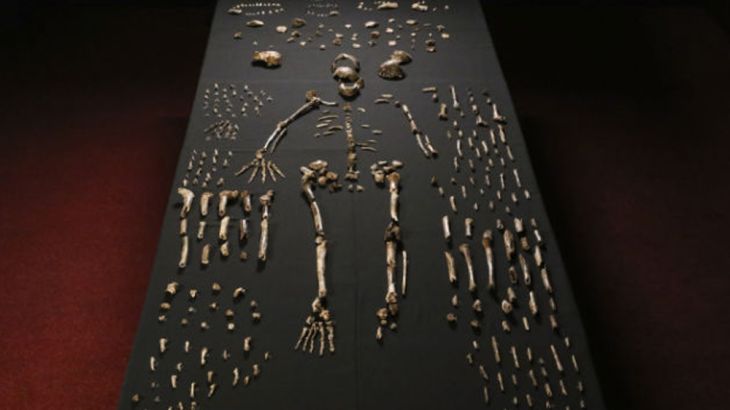Remains of ancient human species found in S Africa cave
Scientists at University of Witwatersrand say the species, Homo naledi, may have buried its dead like modern humans.

Archaeologists in South Africa have announced the discovery of a new human species, a find they say could change our understanding of our ancestors.
Researchers at Witwatersrand (Wits) University said on Thursday that the species, which they named Homo naledi, appeared to have intentionally buried its dead in graves – a feature that was once thought to be limited to modern humans.
Keep reading
list of 4 itemsHong Kong’s first monkey virus case – what do we know about the B virus?
Why will low birthrate in Europe trigger ‘Staggering social change’?
The Max Planck Society must end its unconditional support for Israel
The scientists at Wits say they have recovered parts belonging to at least 15 individuals of the same species.

“With almost every bone in the body represented multiple times, H naledi is already practically the best-known fossil member of our lineage,” said Professor Lee Berger, research professor in the Evolutionary Studies Institute at Wits.
The remains were found in a cave known as Rising Star in the Cradle of Humankind, about 50km northwest of the South African city of Johannesburg.
The fossils, which included those of children, adults and elderly members of the species, were found in a room deep underground the cave network.
Researchers said the room had been isolated from other chambers and was not open to the surface.
“What’s important for people to understand is that the remains were found practically alone in this remote chamber in the absence of any other major fossil animals,” said Paul Dirks of James Cook University in Queensland, Australia, the lead author of the paper on the context of the find.
READ MORE: Al Jazeera’s dedicated page for science and technology news
The scientists said there was no sign the bodies had been brought to the room by any other cause but human contact.
“We explored every alternative scenario, including mass death, an unknown carnivore, water transport from another location, or accidental death in a death trap, among others,” said Berger.
“In examining every other option, we were left with intentional body disposal by Homo naledi as the most plausible scenario.”
Interment of the dead, a characteristic the findings seem to show, indicates ritualised behaviour, traditionally thought to be a uniquely modern human trait.
Age unknown
The species though biologically related to humans appears to have several important features that make it distinct.
Homo naledi has fingers more curved than modern humans, suggesting it was adept at climbing, and the most complete foot sample is on the smaller end of what is found on modern humans.
The university said the species has a lower foot arch, and studies of the whole skeleton showed Homo naledi was able to walk upright, as well as climb trees.
It was difficult to figure out how old the remains were because of the lack of fossil records from other animals directly associated with the find.
The university hopes to release information on the age of the remains after further research.
![Homo naledi fossil fragments [University of Witwatersrand]](/wp-content/uploads/2015/09/96077a028df54ad189566fc53e0ce664_18.jpeg)
![A jaw bone fragment belonging to Homo naledi [University of Witwatersrand]](/wp-content/uploads/2015/09/a39778844b98474e9b3c852afd0fdc85_18.jpeg)